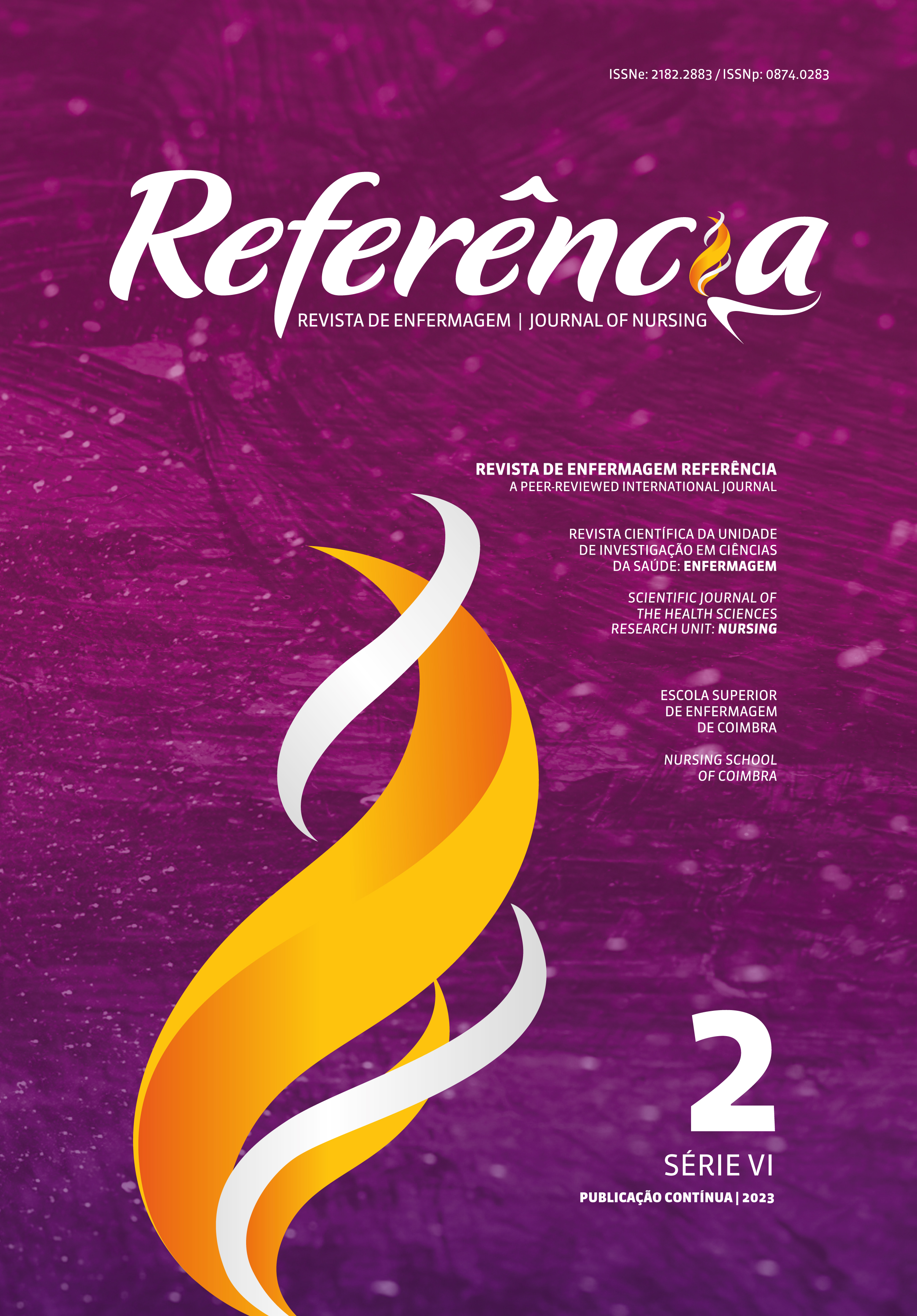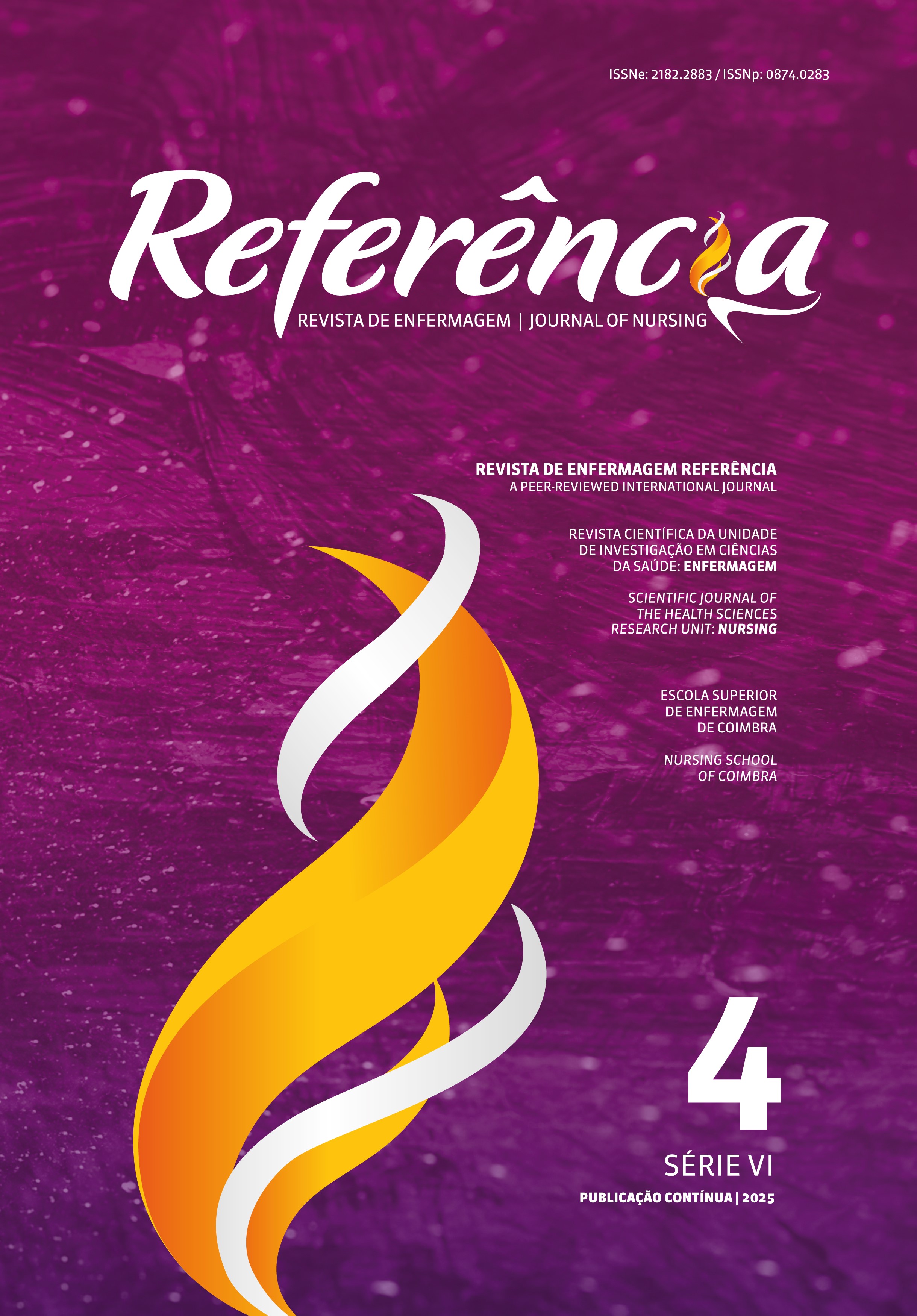Assessment interval scale for peripheral intravenous catheters in pediatrics: A convergent care research study
DOI:
https://doi.org/10.12707/RVI23.54.30864Keywords:
catheterization, peripheral, nursing care, Delphi technique, childAbstract
Background: According to the literature 58.7% to 86.7% of hospitalized patients have a peripheral venous catheter. However, the use of this device is not without complications. The management of these devices generates a significant demand for care by the nursing team.
Objective: Construct and validate a scale to determine the time interval for the evaluation of peripheral accesses using continuous infusion in pediatrics.
Methodology: Methodological, observational, prospective, quantitative and convergent assistential study.
Results: The scale was submitted to two phases for construct validation. The final sum of all scores had an agreement of 87.5%. The Linear Weighted Kappa Reliability Test showed almost perfect reliability 0.91, 0.87 and 0.88 for patient’s clinical condition, vein characteristics and final score respectively. All indicators were statistically significant (p = 0.001).
Conclusion: The time interval for the evaluation of peripheral accesses in continuous infusion, considering the specificity of each patient, is possible using the Maia e Castro scale, which helps the practice of nursing care in pediatric patients.
Downloads
References
Agência Nacional de Vigilância Sanitária. (2020). Caderno 4: Medidas de prevenção de infecção relacionada à assistência à saúde. https:// www.gov.br/anvisa/pt-br/centraisdeconteudo/publicacoes/servi- cosdesaude/publicacoes/caderno-4-medidas-de-prevencao-de-in- feccao-relacionada-a-assistencia-a-saude.pdf/view
Bitencourt, E. S., Leal, C. N., Boostel, R., Mazza, V. D., Felix, J. V., & Pedrolo, E. (2018). Prevalência de flebite relacionada ao uso de dispositivos intravenosos periféricos em crianças. Cogitare Enfermagem, 23(1), e49361. https://doi.org/10.5380/ ce.v23i1.49361
Braga, L. M., Parreira, P. M., Oliveira, A. S., Mónico, L. S., Arreguy-Sena, C., & Henriques, M. A. (2018). Phlebitis and infiltration: Vascular trauma associated with the peripheral venous catheter. Revista Latino-Americana de Enfermagem, 26, e3002. https://doi. org/10.1590/1518-8345.2377.3002
Corbett, M., Marshall, D., Harden, M., Oddie, S., Phillips, R., & McGuire, W. (2018). Treatment of extravasation injuries in infants and young children: A scoping review and survey. Health Technology Assessment, 22(46), 1–112. https://doi.org/10.3310/hta22460
Dychter, S. S., Gold, D. A., Carson, D., & Haller, M. (2012). In- travenous therapy: A review of complications and economic considerations of peripheral access. Journal of Infusion Nursing, 35(2), 84–91. https://doi.org/10.1097/nan.0b013e31824237ce
Floriano, C. M., Peterlini, M. A., & Avelar, A. F. (2018). Fatores de risco para o insucesso da punção intravenosa periférica nas crianças: Revisão integrativa. https://www.even3.com.br/anais/sobep/75656-fato-res-de-risco-para-o-insucesso-da-puncao-intravenosa-periferica-em-criancas-revisao-integrativa/
Giuliano, K. K., Penoyer, D., Mahuren, R. S., & Bennett, M. (2021). Intravenous smart pumps during actual clinical use: A descriptive comparison of primary and secondary infusion practices. Journal of Infusion Nursing, 44(3), 128–136. https://doi.org/10.1097/nan.0000000000000415
Gorski, L. A., Hadaway, L., Hagle, M. E., Broadhurst, D., Clare, S., Kleidon, T., Meyer, B. M., Nickel, B., Rowley, S., Sharpe, E., & Alexander, M. (2021). Infusion therapy standards of practice. Journal of Infusion Nursing, 44(1S), S1–S224. https://doi.org/10.1097/nan.0000000000000396
Institute of Medicine. (2001). Crossing the quality chasm: A new health system for the 21st century. National Academies Press.
Kottner, J., Audigé, L., Brorson, S., Donner, A., Gajewski, B. J., Hróbjartsson, A., Roberts, C., Shoukri, M., & Streiner, D. L. (2011). Guidelines for reporting reliability and agreement studies (GRRAS) were proposed. Journal of Clinical Epidemiology, 64(1), 96–106. https://doi.org/10.1016/j.jclinepi.2010.03.002
Landis, J. R., & Koch, G. G. (1977). The measurement of observer agreement for categorical data. Biometrics, 33(1), 159-174. https:// pubmed.ncbi.nlm.nih.gov/843571/
Major, T. W., & Huey, T. K. (2016). Decreasing IV infiltrates in the pediatric patient: System-based improvement project. Pe- diatric Nursing, 42(1), 14-20. https://pubmed.ncbi.nlm.nih. gov/27019937/
Odom, B., Lowe, L., & Yates, C. (2018). Peripheral infiltration and extravasation injury methodology: A retrospective study. Journal of Infusion Nursing, 41(4), 247–252. https://doi.org/10.1097/nan.0000000000000287
O’Grady, N. P., Alexander, M., Burns, L. A., Dellinger, E. P., Garland, J., Heard, S. O., Lipsett, P. A., Masur, H., Mermel, L. A., Pearson,M. L., Raad, I. I., Randolph, A. G., Rupp, M. E., Saint, S., & the Healthcare Infection Control Practices Advisory Committee. (2011). Guidelines for the prevention of intravascular catheter-related infections. Clinical Infectious Diseases, 52(9), e162–e193. https://doi.org/10.1093/cid/cir257
Shaller, D., & Shaller Consulting. (2007). Patient-centered care: What does it take? https://www.issuelab.org/resources/10548/10548.pdf
Suarez, C. (2023). Extravasation injury claims cost NHS £15.6 million. https://eu.bd.com/iv-news/news-innovation/extravasation-inju-ry-claims-cost-nhs-15-million/
Walker, R. M., Pires, M. P., Ray-Barruel, G., Cooke, M., Mihala, G., Azevedo, S. S., Peterlini, M. A., Felipe, M. D., Álvarez, C P., Quintanilla, M., Corzo, M. C., Villareal, G. C., Cigarroa, E. N., Pedreira, M. L., & Rickard, C. M. (2023). Peripheral vascular catheter use in Latin America (the vascular study): A multinational cross-sectional study. Frontiers in Medicine, 9, 1-14. https://doi. org/10.3389/fmed.2022.1039232






















